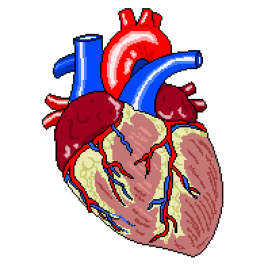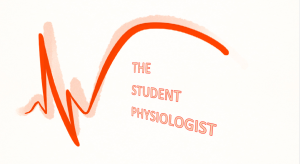Recently, in a Holter clinic, I dealt with an 8 year old patient who was on the road to recovery after a diagnosis of congenital defect, Tetralogy of Fallot. As a result, I got hold of the most interesting ECG I have recorded to date.
Background
ToF is a rare congential defect affecting the heart, that results in an insufficiency of oxygenated blood leaving the heart through the systemic circulation. Thus, it is considered a cyanotic disorder.
The disorder affects roughly 5 in 10,000 infants, and has an equal gender distribution.
Generally, four pathologies comprise ToF. Whilst all four are not always present, three can consistently be found. ToF is a progressive disorder, in that each pathology gives rise to the others.
The four principal defects are:


- Pulmonary Stenosis

- Ventricular Septal Defect
- Hole in septum, due to malformation, causing oxygenated and deoxygenated blood to mix within cardiac structure
- Overriding Aorta
- Aorta is placed over VSD, transporting blood with low O2 content to wider systemic circulation
Cyanotic episodes require immediate correction, before surgical intervention.
- High flow O2 administration
- Physical positioning
- Knees to chest
- Parent cradling the child will illicit this effect naturally
- NaCl fluid bolus
- Vasopressor therapy
- Increases systemic vascular resistance, shunting blood through pulmonary system.
- Continuous ECG and SpO2 monitoring
Surgical intervention usually repairs the VSD and addresses pulmonary pathology, often at the same time.
Prognosis for ToF patients is generally very good.
- Overall outcome improved since surgical treatment has improved
- Survival of surgery is currently 95-99%
- 36 year post-surgical survival is currently 96%
- Patients who undergo surgical treatment are at greater lifelong risk of ventricular arrhythmia
- Complications can arise as a result of a transannular patch repair, specifically;
- RV dysfunction
- Heart block (risk of HB has dropped to around 1%, in recent studies)
- Heart failure
- Recurrent or residual VSD
Hx:
- 8 y/o
- Previous diagnosis of ToF
- VSD
- PV Stenosis
- Mild RVH
- Treatment:
- Transannular patch repair
- PV Replacement
Medication:
- Daily:
- Atenolol
- Aspirin
This patient was having a 24hr Holter recording to assess cardiac recovery after their most recent procedure; the PV replacement. Physical examination showed a RVOT murmur, whilst echocadiography displayed a mild RVH and PV regurgitation. Left heart functionality has been classed as excellent.
Previous ambulatory study has shown no arrhythmic action, save for that considered normal in a child of this age. No previous ECG recordings were available.
Upon monitor removal, a 12-Lead ECG was performed, the resulting trace was as follows:

- Sinus rhythm with BBB morphology
- Sokolow-Lyon value of 36mV for RVH
- QRS & ST segment abnormalities in all leads
Ambulatory analysis relating to the most recent study did not differ greatly from previous monitoring, showing occasional sinus arrhythmia and bradycardia, five non-conducted P waves were found, and two of these gave rise to periods of sinus bradycardia. All other instances were gradual onset/offset.
Nocturnal bradycardia reached rates as low as 34bpm.
What does everyone think of this ECG and brief ambulatory report? Let us know by leaving a comment below!






